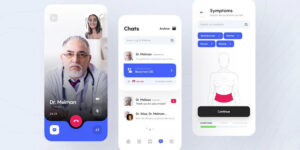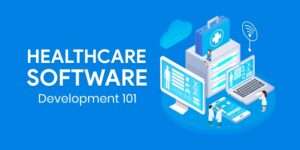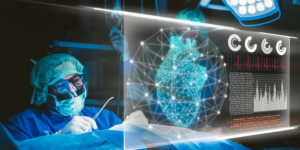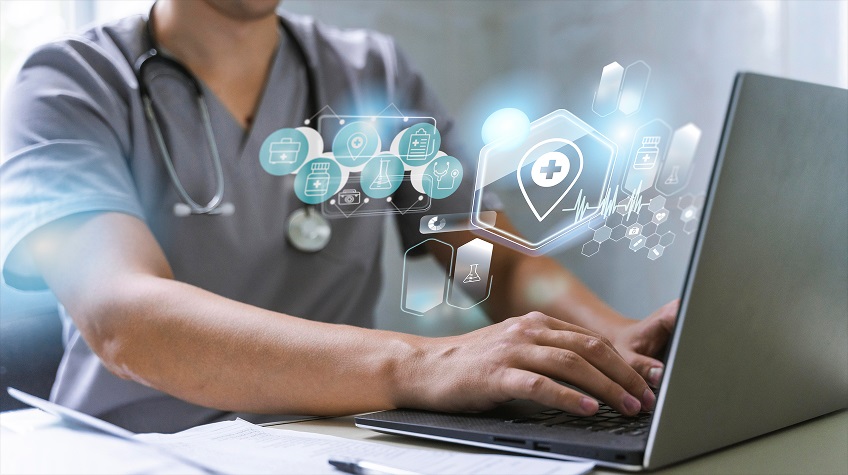
The healthcare industry is ever-evolving, and technology is leading the revolution. Whether it is the EHRs or telemedicine, health software is revolutionizing the medical services and has even made them more available, effective, and user-friendly for the patients. If you have tech responsibilities at a hospital, clinic, or startup, you need to understand the game of making health software. It is not only about coding but also about being familiar with compliance regulations, incorporating advanced technologies, such as AI and IoT, and providing the highest-level security.
This guide covers all you need to know about the process of developing healthcare software, including selecting the most appropriate type of software, final deployment, and maintenance. It is essential to understand the simplification of the development process, main features, and industry challenges to make the right decisions.
What is Healthcare Software?
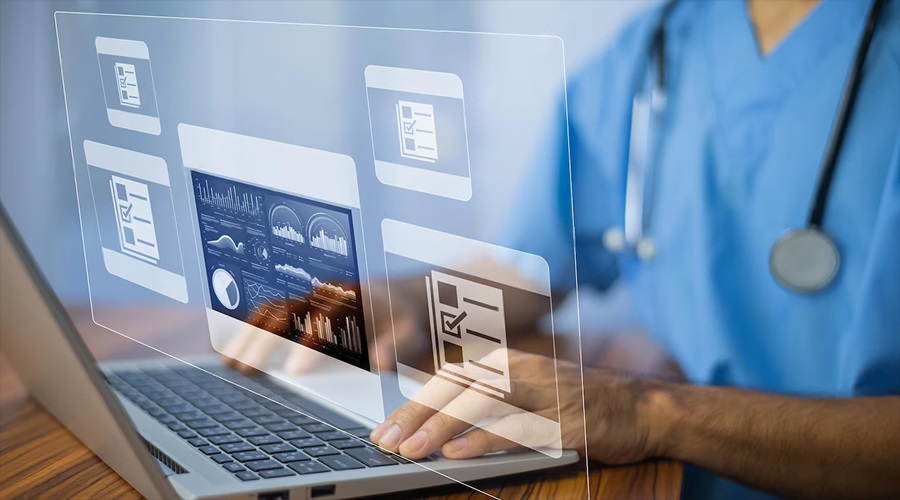
The healthcare software is any digital application that is utilized to handle healthcare procedures like patient records, diagnosis, treatment planning, scheduling appointments, billing, etc. These solutions may benefit patients, providers, insurance firms, as well as hospital managers. Examples include:
- Electronic Health Record (EHR) systems
- Telemedicine platforms
- Remote patient monitoring apps
- Medical billing and coding systems
- Appointment scheduling tools
- Health information exchanges (HIE)
Why is Healthcare Software Important?
As the world becomes more digital, healthcare software provides an intersection between technology and medicine, bringing healthcare more accessible, cheaper, and focused on the patient. Healthcare software brings several benefits:
- We need healthcare software as it makes our medical care easier, improves our patient care, and makes things run efficiently.
- It allows quick entry to the patient’s records and helps in correct diagnosis while reducing human errors.
- Automation also enables hospitals and clinics to manage appointments, billing, and stock efficiently.
- It also improves patient-provider communications with secure messaging and telemedicine.
- Healthcare software assists with data analysis to improve decision-making and guarantees regulations such as HIPAA.
The Role of PACS Systems in Modern Healthcare
A crucial but sometimes overlooked component of healthcare software is PACS (Picture Archiving and Communication System). PACS enables hospitals and clinics to store, manage, and share medical images securely. It replaces outdated film-based systems with digital storage, ensuring instant access to diagnostic data from any location.
For healthcare organizations aiming to optimize imaging workflows, cloud-based solutions like Studycast provide a unified, compliant, and user-friendly platform. Studycast streamlines image management and reporting, helping physicians collaborate efficiently while maintaining full data security and regulatory compliance. Integrating such tools into your healthcare ecosystem not only enhances diagnostic accuracy but also accelerates clinical decision-making.
Healthcare Software Development Process
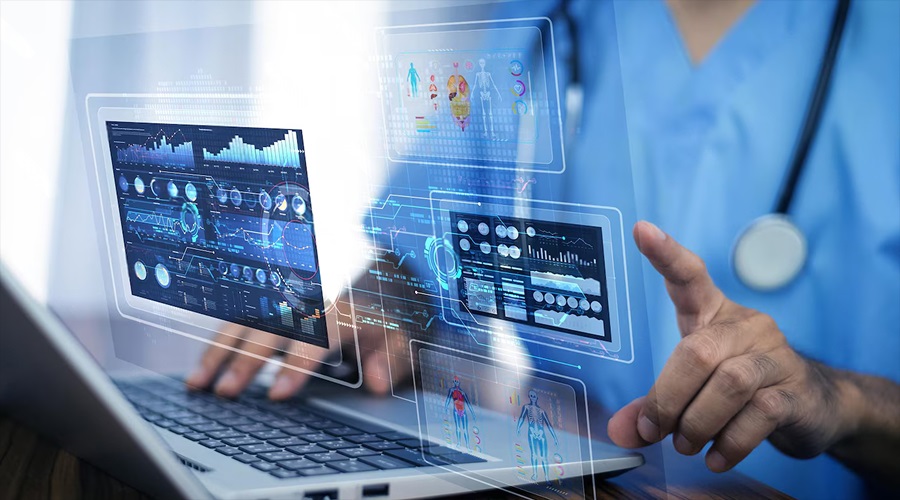
Step 1: Requirement Gathering
The step is closely associated with thorough discussions with stakeholders, including doctors, nurses, patients, and administrators, to learn more about the problem, set objectives, and collect precise requirements. Business analysts and product managers will document workflows, pain areas, and compliance needs in order to make certain that the software caters to the practical issues of healthcare promptly and aligns with requirements.
Step 2: Market and Competitor Analysis
A comprehensive research is performed to analyze the current solutions, feature gaps, and learn user reactions. This action assists in the justification of your product idea, the establishment of achievable expectations, and the design of a distinctive value proposal. Competitive benchmarking also helps decide on the price, target audience, and unique features of your product.
Step 3: UI/UX Design
Designers work on creating intuitive, responsive, and accessible interfaces that are specific to medical professionals and patients. It is aimed at making navigation easier, reducing cognitive load, and achieving device-independent usability. The design phase pays special attention to accessibility standards for elderly or differently-abled users.
Step 4: Prototyping
Prototypes are clickable mockups that replicate the final user experience, but do not have backend functionality. Based on these prototypes, stakeholders can test user journeys at an early stage and give feedback as well as propose improvements. It minimizes expensive changes later on and assists the developers with what the final product should look like, feel, and even flow like.
Step 5: Backend and Frontend Development
The backend consists of developers constructing the main features and functionality, architecture, and database infrastructure, whereas the frontend is implemented by constructing the user interface. Emphasis is laid on performance, security, and modular code organization. Agile is commonly applied to guarantee progressive deliverables, quicker iteration, and open communication between teams.
Step 6: Integration with Third-party APIs
Healthcare software Development has to integrate with 3rd party systems frequently, such as EHRs, payment gateways, or video conferencing APIs. These services are integrated and tested by developers to allow a secure and reliable flow of data. Well-known APIs are Redox, Twilio, and Stripe, depending on the features that your app must offer.
Step 7: Testing (QA)
Quality Assurance (QA) teams perform both manual tests and automated tests in order to guarantee the proper functioning of the software in all circumstances. This includes functionality testing, usability testing, performance testing, security testing, and compliance testing. Bug tracking tools are used to report problems and prioritize security testing to defend vulnerable health information.
Step 8: Deployment
After complete testing, the application is set up in a live environment. Deployment involves server configuration, CI/CD pipeline setup, and deploying the app to cloud providers such as AWS or Azure. After deployment, the performance, uptime, and user feedback are observed by the developers to ascertain that everything is running smoothly.
Step 9: Training and Onboarding
To guide healthcare professionals and patients in the utilisation of the software, teams develop training manuals, video tutorials, and help desks. To address the queries and highlight the important features, particularly among the elderly or non-tech users, workshops or demo sessions are commonly conducted.
Step 10: Maintenance and Support
Once the software is released, developers provide support in the form of updates, security fixes, performance tuning, and feature additions. Continuing maintenance determines the relevance of the product with the changing healthcare regulations and technological norms.
Challenges in Healthcare Software Development
1. Compliance Complexity:
There exist numerous laws, including HIPAA, GDPR, and HL7, that healthcare software must adhere to. These are not straightforward laws to comprehend and implement in the right way, especially in situations where one is operating in numerous areas with diverse regulations, thus creating legal issues and project setbacks if not addressed accordingly.
2. Integration with Legacy Systems:
Many hospitals are stuck with legacy software systems that lack contemporary APIs or even standards. Integrating new applications to these legacy systems would require custom connectors and some additional effort, which increases the cost and duration of the projects and introduces a potential risk of data inconsistency and security breaches.
3. User Resistance:
Habits, absence of training, and fear of disrupting are likely hurdles that will prompt healthcare professionals to resist utilizing new technology. If the software is not intuitive or unsupported, then the staff may not utilize it, and this will have negative implications on productivity and consequently on the failure of the software.
4. Data Interoperability:
It is quite a challenge to make sure that various systems share and interpret data correctly. The absence of cross-platform standardization brings about compatibility problems. To achieve an uninterrupted data exchange between labs, clinics, and hospital systems, developers should utilize HL7, FHIR, or create their bridges.
5. Real-time Performance:
Apps such as telehealth or patient monitoring need a zero-latency data exchange in real-time. It is technically challenging to guarantee low latency, high server availability, as well as continuous video calls, particularly in remote locations, and this needs infrastructure and performance tuning.
Future Trends in Healthcare Software
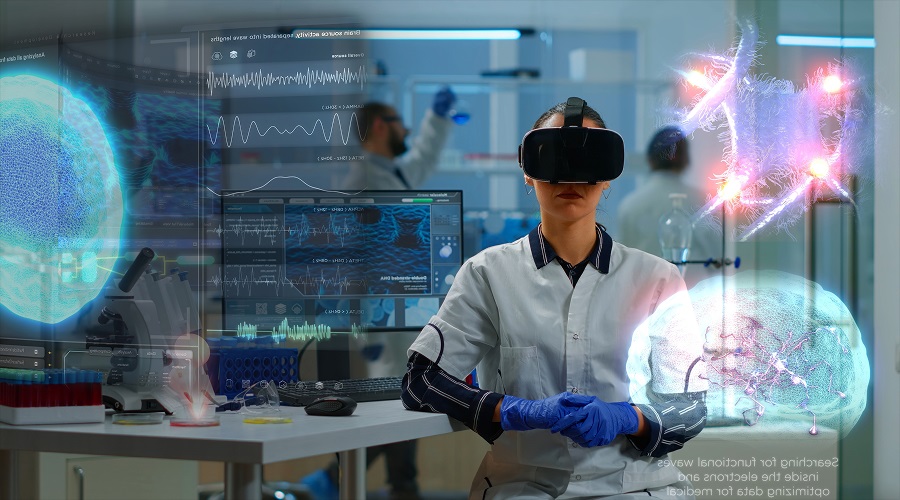
The future of healthcare software is being determined by rapid technological progress and an increase in the demand for personalized and efficient patient care.
- Artificial Intelligence (AI) is being inculcated in predictive diagnostics, analysis of patient risks, and medical images. Telemedicine is going to grow even more, with the help of 5G and real-time data transmission.
- The Internet of Medical Things (IoMT) and wearable devices will facilitate proactive care and around-the-clock health monitoring.
- Blockchain is a new technology for storing patient records in a secure and decentralized system to improve data integrity and privacy.
- AR and VR find application in surgery training and pain treatment therapy.
- Chatbots and voice-assisted technologies are enhancing patient engagement and decreasing the administrative burden.
Also Read: Artificial Intelligence in Healthcare
Conclusion
In conclusion, healthcare software development is not merely a technical activity; it is a duty. You are developing instruments that change lives, assist medical workers, and handle confidential information. The key to success is to match the technology with healthcare demands, offer conformity, and create easy-to-use interfaces. Whether developing an EHR system, a telemedicine application, or a health tracking platform, use the process discussed here to deliver a secure, compliant, and meaningful product. Healthcare is going digital; therefore, ensure you are doing it the correct way.

